#Microsoft Azure IoT
Explore tagged Tumblr posts
Text
#Remote IoT APIs#IoT Device Management#Google Cloud IoT Core#AWS IoT#Microsoft Azure IoT#ThingSpeak#Losant IoT#IBM Watson IoT#IoT Solutions 2025
0 notes
Text
Difference Between Azure and AWS IoT
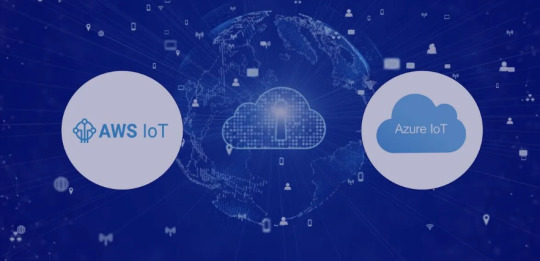
If you want to know about the difference between AWS IoT vs Azure IoT and which one is right for your business then you should read this blog.
1 note
·
View note
Text

Growth is exciting, but only if your app can handle it! Cloud technology ensures your app scales effortlessly to meet increasing demand. 📈 Get ready for success! 🔗Learn more: https://greyspacecomputing.com/custom-mobile-application-development-services/ 📧 Visit: https://greyspacecomputing.com/portfolio
#GreySpaceComputing#CloudTech#AppScalability#cloudcomputing#cloud#technology#cybersecurity#aws#bigdata#devops#it#datacenter#azure#cloudstorage#linux#programming#software#tech#iot#cloudservices#coding#cloudsecurity#machinelearning#informationtechnology#datascience#business#python#security#microsoft#dataprotection
2 notes
·
View notes
Text
My Journey with Azure IoT Hub: Connecting and Managing IoT Devices at Scale
The Internet of Things (IoT), which enables seamless connectivity and automation across numerous industries, has completely changed the way we engage with technology. I was curious to learn more about the Internet of Things and its possible uses as an aspiring IoT enthusiast. My experience using Azure IoT Hub, Microsoft’s cloud-based IoT platform, and how it assisted me in connecting and managing IoT devices at scale are both discussed in this blog.
Getting Started with Azure IoT Hub

To embark on my IoT journey, I began by understanding the fundamentals of Azure IoT Hub. Azure IoT Hub is a fully managed service that acts as a central hub for bi-directional communication between IoT devices and the cloud. It provides secure, reliable, and scalable connectivity for IoT solutions. Setting up an Azure IoT Hub was my first step. While the process was relatively straightforward, I encountered a few challenges along the way.
Connecting IoT Devices
Once Azure IoT Hub was set up, I delved into the world of IoT devices. I worked with various types of IoT devices, ranging from simple sensors to complex industrial machines. Connecting these devices to Azure IoT Hub required the implementation of device-specific protocols such as MQTT or HTTP. Additionally, I focused on securing device connections and data transmission by utilizing security features provided by Azure IoT Hub.
Real-world examples of IoT devices connected to Azure IoT Hub are aplenty. For instance, in the healthcare industry, wearable devices can transmit patient vitals to Azure IoT Hub, allowing healthcare providers to monitor and respond to critical situations promptly. In smart homes, IoT devices such as thermostats and security cameras can be connected to Azure IoT Hub, enabling remote control and monitoring capabilities.
Managing IoT Devices at Scale
As my IoT project grew, I encountered the need to scale up the number of connected devices. Azure IoT Hub offered robust device management features that simplified the process of managing a large fleet of devices. I could remotely monitor the health, status, and firmware version of each device, enabling efficient troubleshooting and maintenance. Implementing best practices for device management, such as grouping devices based on location or functionality, enhanced the overall operational efficiency of my IoT solution.
Data Ingestion and Processing
Data collected from IoT devices is a valuable asset that can drive actionable insights and informed decision-making. Azure IoT Hub facilitated the ingestion and routing of data to Azure services for further processing and analysis. I had the opportunity to work with Azure Stream Analytics and Azure Functions, which enabled real-time data processing, transformation, and visualization. Leveraging these services allowed me to unlock the true potential of IoT data and derive meaningful insights.
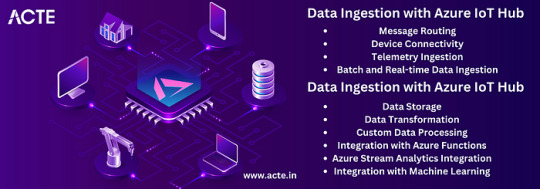
Security and Compliance
Any IoT solution must prioritize security. Azure IoT Hub provided robust security features that ensured end-to-end protection of IoT deployments. These features included device authentication, message encryption, and integration with Azure Active Directory for access control. Additionally, Azure IoT Hub helped me meet compliance and regulatory requirements by providing built-in support for industry standards such as ISO 27001, HIPAA, and GDPR. Throughout my journey, I learned valuable lessons and implemented best practices for securing IoT solutions.
Scalability and Performance
Scaling an IoT solution to handle thousands or millions of devices is a complex task. Azure IoT Hub offered scalability features that allowed me to effortlessly handle large-scale IoT deployments. With Azure IoT Hub’s device-to-cloud messaging capabilities, I could reliably transmit messages to and from a massive number of devices. Moreover, I gained insights into optimizing IoT solutions for performance by considering factors such as message size, frequency, and device capabilities.
Real-World Use Cases
To understand the versatility of Azure IoT Hub, it is crucial to explore real-world use cases. In the manufacturing industry, Azure IoT Hub can be leveraged to connect and monitor machines on the factory floor, ensuring optimal performance and predictive maintenance. In the agriculture sector, IoT devices connected to Azure IoT Hub can collect data on soil moisture levels, temperature, and humidity, enabling farmers to make data-driven decisions for irrigation and crop management. These use cases highlight the valuable role that Azure IoT Hub plays in various domains and industries.
Future of IoT and Azure IoT Hub
The future of IoT is promising, with emerging trends shaping the landscape. As IoT continues to evolve, Azure IoT Hub will play a crucial role in enabling seamless connectivity, advanced analytics, and artificial intelligence capabilities. Integration with other Azure services and continuous updates from Microsoft ensure that Azure IoT Hub remains at the forefront of IoT innovation. The possibilities for IoT applications are limitless, and Azure IoT Hub will continue to empower developers and organizations to build robust and scalable IoT solutions.
Throughout my journey with Azure IoT Hub, I gained valuable insights and experiences. Azure IoT Hub simplified the process of connecting and managing IoT devices, providing a reliable and scalable platform. The seamless integration with other Azure services allowed me to unlock the full potential of IoT data. Moreover, the security and compliance features provided peace of mind, ensuring that my IoT solution was protected from threats. Overall, Azure IoT Hub has been instrumental in my IoT journey, contributing to enhanced efficiency and productivity.
Recommendations and Tips
For those interested in starting their own IoT journey with Azure IoT Hub, I offer the following recommendations and tips:
Begin with a clear understanding of your IoT use case and requirements.
Familiarize yourself with the documentation and resources provided by Microsoft to gain a solid foundation.
Start small and gradually scale your IoT solution as needed.
Take advantage of the device management and security features offered by Azure IoT Hub.
Leverage other Azure services such as Azure Stream Analytics and Azure Functions to derive meaningful insights from IoT data.
Stay updated on emerging trends and best practices in the IoT space.
To deepen your knowledge of IoT and Azure IoT Hub, I recommend exploring Microsoft’s official documentation, participating in the ACTE Technologies Microsoft Azure training, and attending IoT-focused conferences and events.

Azure IoT Hub has proven to be a powerful and comprehensive platform for connecting and managing IoT devices at scale. Throughout my journey, I witnessed the transformative potential of IoT solutions and the crucial role played by Azure IoT Hub in enabling seamless connectivity, advanced analytics, and robust security. As IoT continues to evolve, Azure IoT Hub will undoubtedly remain at the forefront of IoT innovation, empowering organizations to build scalable and efficient IoT solutions. I encourage readers to embark on their own IoT journeys, leveraging the capabilities of Azure IoT Hub to unlock the full potential of IoT. Join me in embracing the future of IoT and revolutionizing industries through connected devices. Please leave your comments, stories, and inquiries in the space provided below. Let’s continue the conversation and explore the endless possibilities of IoT together.
#microsoft azure#cloud services#information technology#education#tech#technology#iot#innovation#cloud computing
5 notes
·
View notes
Text
Demystifying Microsoft Azure Cloud Hosting and PaaS Services: A Comprehensive Guide
In the rapidly evolving landscape of cloud computing, Microsoft Azure has emerged as a powerful player, offering a wide range of services to help businesses build, deploy, and manage applications and infrastructure. One of the standout features of Azure is its Cloud Hosting and Platform-as-a-Service (PaaS) offerings, which enable organizations to harness the benefits of the cloud while minimizing the complexities of infrastructure management. In this comprehensive guide, we'll dive deep into Microsoft Azure Cloud Hosting and PaaS Services, demystifying their features, benefits, and use cases.
Understanding Microsoft Azure Cloud Hosting
Cloud hosting, as the name suggests, involves hosting applications and services on virtual servers that are accessed over the internet. Microsoft Azure provides a robust cloud hosting environment, allowing businesses to scale up or down as needed, pay for only the resources they consume, and reduce the burden of maintaining physical hardware. Here are some key components of Azure Cloud Hosting:
Virtual Machines (VMs): Azure offers a variety of pre-configured virtual machine sizes that cater to different workloads. These VMs can run Windows or Linux operating systems and can be easily scaled to meet changing demands.
Azure App Service: This PaaS offering allows developers to build, deploy, and manage web applications without dealing with the underlying infrastructure. It supports various programming languages and frameworks, making it suitable for a wide range of applications.
Azure Kubernetes Service (AKS): For containerized applications, AKS provides a managed Kubernetes service. Kubernetes simplifies the deployment and management of containerized applications, and AKS further streamlines this process.
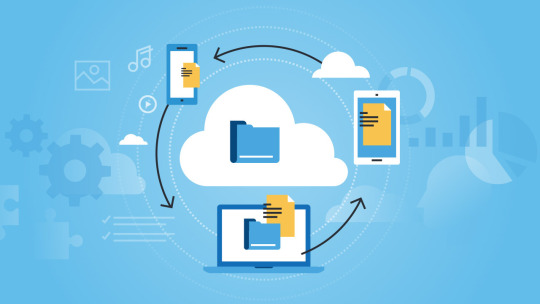
Exploring Azure Platform-as-a-Service (PaaS) Services
Platform-as-a-Service (PaaS) takes cloud hosting a step further by abstracting away even more of the infrastructure management, allowing developers to focus primarily on building and deploying applications. Azure offers an array of PaaS services that cater to different needs:
Azure SQL Database: This fully managed relational database service eliminates the need for database administration tasks such as patching and backups. It offers high availability, security, and scalability for your data.
Azure Cosmos DB: For globally distributed, highly responsive applications, Azure Cosmos DB is a NoSQL database service that guarantees low-latency access and automatic scaling.
Azure Functions: A serverless compute service, Azure Functions allows you to run code in response to events without provisioning or managing servers. It's ideal for event-driven architectures.
Azure Logic Apps: This service enables you to automate workflows and integrate various applications and services without writing extensive code. It's great for orchestrating complex business processes.
Benefits of Azure Cloud Hosting and PaaS Services
Scalability: Azure's elasticity allows you to scale resources up or down based on demand. This ensures optimal performance and cost efficiency.
Cost Management: With pay-as-you-go pricing, you only pay for the resources you use. Azure also provides cost management tools to monitor and optimize spending.
High Availability: Azure's data centers are distributed globally, providing redundancy and ensuring high availability for your applications.
Security and Compliance: Azure offers robust security features and compliance certifications, helping you meet industry standards and regulations.
Developer Productivity: PaaS services like Azure App Service and Azure Functions streamline development by handling infrastructure tasks, allowing developers to focus on writing code.
Use Cases for Azure Cloud Hosting and PaaS
Web Applications: Azure App Service is ideal for hosting web applications, enabling easy deployment and scaling without managing the underlying servers.
Microservices: Azure Kubernetes Service supports the deployment and orchestration of microservices, making it suitable for complex applications with multiple components.
Data-Driven Applications: Azure's PaaS offerings like Azure SQL Database and Azure Cosmos DB are well-suited for applications that rely heavily on data storage and processing.
Serverless Architecture: Azure Functions and Logic Apps are perfect for building serverless applications that respond to events in real-time.
In conclusion, Microsoft Azure's Cloud Hosting and PaaS Services provide businesses with the tools they need to harness the power of the cloud while minimizing the complexities of infrastructure management. With scalability, cost-efficiency, and a wide array of services, Azure empowers developers and organizations to innovate and deliver impactful applications. Whether you're hosting a web application, managing data, or adopting a serverless approach, Azure has the tools to support your journey into the cloud.
#Microsoft Azure#Internet of Things#Azure AI#Azure Analytics#Azure IoT Services#Azure Applications#Microsoft Azure PaaS
2 notes
·
View notes
Text
Azure IoT provides real-world sustainability solutions

Organizations are implementing cutting edge IoT and Digital Operations solutions to support sustainable business practices, meet energy conservation targets, and improve operational efficiencies in today’s fast paced environment. he want to share a few recent tales that demonstrate how businesses use technology to address actual sustainability concerns for their clients since he is so impressed by their work.
Sustainability measures cut expenses, waste, and energy use
Microsoft Azure makes sure that manufacturing firms are well equipped to comprehend, minimize, and validate their environmental consequences by utilizing technologies like open industrial IoT, advanced analytics, and AI. Two instances of Azure customers adopting IoT and Digital Operations to cut costs, waste, and energy utilization are Celanese and SGS.
The firm Celanese, which produces speciality chemicals and materials, envisions a digital plant of the future that will be run on Microsoft Azure and Cognite Data Fusion. The plan is to integrate their operations, resources, and 25,000 personnel into a single, secure platform where AI algorithms actively recognize and address manufacturing issues.
For a multinational specialized manufacturer like Celanese, the capacity to quickly and affordably implement a variety of solutions anywhere throughout its value chain translates into savings of millions of dollars through the optimization of heavy equipment and industrial processes.
The foundation of Cognite’s infrastructure is Microsoft Kubernetes Service (AKS). Complex calculations are orchestrated by Azure Functions using Azure Data Lake stored data. With contextualized industrial data, Azure’s AI capabilities and Azure Machine Learning give useful insights. In nearly 30 industrial facilities around the world, the solutions increase energy efficiency and lower carbon emissions.
SGS, a business that does testing, inspection, and certification, collaborated with Microsoft Azure to create OCM-Online, an intelligent wind turbine device that makes use of Azure IoT Edge, Azure IoT Hub, and three Azure database services.
The solution gathers information from sensors that provide data on more than 17 distinct metrics from more than 315 wind turbines to monitor and forecast turbine oil conditions and levels. The Three Gorges Yangiiang Shaba Offshore project, one of the biggest wind farms in the world that supplies power to 2.4 million homes, has the solution installed throughout.
Wind farm operators no longer change oil according to a predetermined schedule, just when data indicates that it is necessary. As a result, recycling issues and pointless oil changes are considerably diminished. In the past, field crews would manually gather samples and transport them to a lab for examination.
Digital solutions like OCM Online are crucial for addressing waste and recycling issues because the global market for online oil fluid monitoring is expected to grow from 689.7 million USD in 2021 to 1.4 billion USD by 2031.
Energy saving measures are driven by data
The development of clean energy technologies, such as wind, solar, hydropower, and nuclear power, is accelerating. But addressing the supply side of energy use alone won’t help us reach our ambitious global energy reduction targets. Reduced demand is necessary.
Without clear and readily available data, it can be difficult for customers to make decisions about their energy use. Innovative solutions from Azure customers like SA Power Networks and Watts provide consumers with the information they need to make wise decisions.
The Danish energy technology business Watts offers one consumer-based solution. Watts’ smart home energy-tracking software uses Microsoft Azure to enable homes to watch their own energy usage patterns, understand how energy is being utilized, and decide whether or not to operate equipment. Customers can opt to power their homes with green energy because they can see where the energy is produced.
The business is in the forefront of creating simple, open-source tools that anyone can use to track their power usage. Almost all households connected to the grid now use less energy thanks to near real time data monitoring.
The Microsoft.NET platform, a free, open-source software development framework and ecosystem created by Microsoft, is the technology Watts decided to use for his project. It produced a network of 50 microservices that utilized Azure Event Hubs and the Azure Service Bus for communication.
Azure Table Storage and Azure Blob Storage are also used by the system. The company’s customer base has significantly grown, showing that people desire to make decisions that have an impact. By the end of 2022, Watts had increased from 150,000 users to 550,000.
SA Power Networks, a South Australian utility business, has developed a further consumer-focused solution. It created ac-based solution that enables people with rooftop solar panels to export extra solar energy to the electrical grid. The system that serves 1.7 million clients over 180,000 square kilometers uses a sizable portion of the extra energy that is generated.
Data from the devices gives SA Power Networks visibility into local network conditions, enabling it to react more swiftly to possible problems. Additionally, it enables dynamically regulated network capacity to maintain the balance of energy resources for a grid that is more reliable and stable. All customers on the SA Power Networks grid now have access to more low-cost, renewable energy as the typical customer’s energy exports have doubled in only a year.
Operational effectiveness lowers expenses while promoting growth
Businesses that streamline their processes see higher productivity and lower manufacturing costs. They also utilize fewer materials and less energy. A platform powered by Azure IoT is used by Telefónica, a telecommunications company, to effectively and securely manage 6.5 billion messages daily.
With the help of Microsoft Azure IoT and the Azure IoT Hub device provisioning service, its Home Advanced Connectivity (HAC) technology enables real-time, bidirectional data flows between 4.5 million in-home gateway devices and the Telefónica cloud.
By obtaining information directly from a customer’s router and delivering a patch inside a single, continuous data flow, operations teams can identify or anticipate connectivity problems. Additionally, HAC employs IoT Hub device twins to support accurate, remote router configuration. With this effective digital solution, growing to 20 million devices over the next five years will be simplified.
Let Azure bring out the best in you
Azure is fostering innovation and accelerating success across numerous industries globally, from startups to Fortune 500 powerhouses. The work our clients are doing to support sustainability objectives for the public and private sectors is just a small sample of what they do.
1 note
·
View note
Text
Web to Mobile: Building Seamless Apps with .NET"
.NET is a effective, flexible, and open-supply developer platform created with the aid of Microsoft. It enables the creation of a huge range of applications—from computing device to cellular, net, cloud, gaming, and IoT. Over the years, .NET has evolved substantially and has become one of the maximum extensively used frameworks inside the software improvement enterprise.
Dot Net Programming Language

A Brief History of .NET
The .NET Framework become first delivered through Microsoft in the early 2000s. The original cause turned into to offer a steady item-oriented programming surroundings regardless of whether code became stored and finished locally, remotely, or via the internet.
Over time, Microsoft developed .NET right into a cross-platform, open-supply framework. In 2016, Microsoft launched .NET Core, a modular, high-performance, cross-platform implementation of .NET. In 2020, the company unified all its .NET technologies beneath one umbrella with the discharge of .NET five, and later persisted with .NET 6, .NET 7, and past.
Today, the unified platform is actually called .NET, and it allows builders to build apps for Windows, macOS, Linux, iOS, Android, and greater using a single codebase.
Key Features of .NET
1. Cross-Platform Development
One of the maximum tremendous features of present day .NET (publish .NET Core) is its ability to run on a couple of platforms. Developers can construct and deploy apps on Windows, Linux, and macOS with out enhancing their codebases.
2. Multiple Language Support
.NET supports numerous programming languages, together with:
C# – the maximum extensively used language in .NET development
F# – a purposeful-first programming language
Visual Basic – an smooth-to-analyze language, regularly used in legacy programs
This multilingual capability allows developers to pick out the nice language for their precise use cases.
3. Extensive Library and Framework Support
.NET offers a comprehensive base magnificence library (BCL) and framework libraries that aid the whole lot from record studying/writing to XML manipulation, statistics get entry to, cryptography, and extra.
Four. ASP.NET for Web Development
ASP.NET is a part of the .NET platform specially designed for net improvement. ASP.NET Core, the cross-platform model, permits builders to build scalable internet APIs, dynamic web sites, and actual-time packages the usage of technology like SignalR.
5. Rich Development Environment
.NET integrates seamlessly with Visual Studio, one of the most function-wealthy integrated development environments (IDEs) available. Visual Studio offers capabilities together with IntelliSense, debugging tools, challenge templates, and code refactoring.
6. Performance and Scalability
.NET is thought for high performance and scalability, especially with its guide for asynchronous programming using async/wait for and its Just-In-Time (JIT) compilation.
7. Secure and Reliable
.NET presents sturdy safety features, including code get entry to security, role-based protection, and cryptography training. It also handles reminiscence management thru rubbish series, minimizing reminiscence leaks.
Common Applications Built with .NET
1. Web Applications
With ASP.NET Core, builders can create cutting-edge, scalable internet programs and RESTful APIs. Razor Pages and Blazor are technology within ASP.NET Core that help server-facet and purchaser-facet rendering.
2. Desktop Applications
Using Windows Forms or Windows Presentation Foundation (WPF), builders can build conventional computing device applications. .NET MAUI (Multi-platform App UI) now extends this functionality to move-platform computer and cellular programs.
3. Mobile Applications
Through Xamarin (now incorporated into .NET MAUI), developers can create native mobile applications for Android and iOS the usage of C#.
4. Cloud-Based Applications
.NET is nicely-acceptable for cloud development, in particular with Microsoft Azure. Developers can build cloud-local apps, serverless capabilities, and containerized microservices the usage of Docker and Kubernetes.
5. IoT Applications
.NET helps Internet of Things (IoT) development, allowing builders to construct applications that engage with sensors and gadgets.
6. Games
With the Unity sport engine, which helps C#, developers can use .NET languages to create 2D, three-D, AR, and VR games.
Components of .NET
1. .NET SDK
The Software Development Kit includes everything had to build and run .NET packages: compilers, libraries, and command-line tools.
2. CLR (Common Language Runtime)
It handles reminiscence control, exception managing, and rubbish collection.
Three. BCL (Base Class Library)
The BCL offers center functionalities including collections, record I/O, records kinds, and extra.
4. NuGet
NuGet is the package manager for .NET. It lets in builders to install, manage, and share libraries without problems.
Modern .NET Versions
.NET five (2020): Unified the .NET platform (Core + Framework)
.NET 7 (2022): Further overall performance enhancements and more desirable APIs
.NET 8 (2023): Continued attention on cloud-native, cellular, and web improvement
Advantages of Using .NET
Cross-platform assist – construct as soon as, run everywhere
Large developer network – widespread sources, libraries, and frameworks
Robust tooling – especially with Visual Studio and JetBrains Rider
Active improvement – backed by using Microsoft and open-source community
Challenges and Considerations
Learning curve – particularly for beginners due to its giant atmosphere
Legacy framework – older .NET Framework tasks aren't like minded with .NET Core or more recent variations without migration
Platform differences – sure APIs or libraries might also behave in a different way throughout operating systems
Getting Started with .NET
To begin growing with .NET:
Install the .NET SDK from the legitimate .NET internet site.
Create a new project: Use the dotnet new command or Visual Studio templates.
Write code: Develop your logic the usage of C#, F#, or VB.NET.
#btech students#bca students#online programming courses#offline institute programming courses#regular colleges university#Dot Net Programming Language
2 notes
·
View notes
Text
Exploring the Azure Technology Stack: A Solution Architect’s Journey
Kavin
As a solution architect, my career revolves around solving complex problems and designing systems that are scalable, secure, and efficient. The rise of cloud computing has transformed the way we think about technology, and Microsoft Azure has been at the forefront of this evolution. With its diverse and powerful technology stack, Azure offers endless possibilities for businesses and developers alike. My journey with Azure began with Microsoft Azure training online, which not only deepened my understanding of cloud concepts but also helped me unlock the potential of Azure’s ecosystem.
In this blog, I will share my experience working with a specific Azure technology stack that has proven to be transformative in various projects. This stack primarily focuses on serverless computing, container orchestration, DevOps integration, and globally distributed data management. Let’s dive into how these components come together to create robust solutions for modern business challenges.

Understanding the Azure Ecosystem
Azure’s ecosystem is vast, encompassing services that cater to infrastructure, application development, analytics, machine learning, and more. For this blog, I will focus on a specific stack that includes:
Azure Functions for serverless computing.
Azure Kubernetes Service (AKS) for container orchestration.
Azure DevOps for streamlined development and deployment.
Azure Cosmos DB for globally distributed, scalable data storage.
Each of these services has unique strengths, and when used together, they form a powerful foundation for building modern, cloud-native applications.
1. Azure Functions: Embracing Serverless Architecture
Serverless computing has redefined how we build and deploy applications. With Azure Functions, developers can focus on writing code without worrying about managing infrastructure. Azure Functions supports multiple programming languages and offers seamless integration with other Azure services.
Real-World Application
In one of my projects, we needed to process real-time data from IoT devices deployed across multiple locations. Azure Functions was the perfect choice for this task. By integrating Azure Functions with Azure Event Hubs, we were able to create an event-driven architecture that processed millions of events daily. The serverless nature of Azure Functions allowed us to scale dynamically based on workload, ensuring cost-efficiency and high performance.
Key Benefits:
Auto-scaling: Automatically adjusts to handle workload variations.
Cost-effective: Pay only for the resources consumed during function execution.
Integration-ready: Easily connects with services like Logic Apps, Event Grid, and API Management.
2. Azure Kubernetes Service (AKS): The Power of Containers
Containers have become the backbone of modern application development, and Azure Kubernetes Service (AKS) simplifies container orchestration. AKS provides a managed Kubernetes environment, making it easier to deploy, manage, and scale containerized applications.
Real-World Application
In a project for a healthcare client, we built a microservices architecture using AKS. Each service—such as patient records, appointment scheduling, and billing—was containerized and deployed on AKS. This approach provided several advantages:
Isolation: Each service operated independently, improving fault tolerance.
Scalability: AKS scaled specific services based on demand, optimizing resource usage.
Observability: Using Azure Monitor, we gained deep insights into application performance and quickly resolved issues.
The integration of AKS with Azure DevOps further streamlined our CI/CD pipelines, enabling rapid deployment and updates without downtime.
Key Benefits:
Managed Kubernetes: Reduces operational overhead with automated updates and patching.
Multi-region support: Enables global application deployments.
Built-in security: Integrates with Azure Active Directory and offers role-based access control (RBAC).
3. Azure DevOps: Streamlining Development Workflows
Azure DevOps is an all-in-one platform for managing development workflows, from planning to deployment. It includes tools like Azure Repos, Azure Pipelines, and Azure Artifacts, which support collaboration and automation.
Real-World Application
For an e-commerce client, we used Azure DevOps to establish an efficient CI/CD pipeline. The project involved multiple teams working on front-end, back-end, and database components. Azure DevOps provided:
Version control: Using Azure Repos for centralized code management.
Automated pipelines: Azure Pipelines for building, testing, and deploying code.
Artifact management: Storing dependencies in Azure Artifacts for seamless integration.
The result? Deployment cycles that previously took weeks were reduced to just a few hours, enabling faster time-to-market and improved customer satisfaction.
Key Benefits:
End-to-end integration: Unifies tools for seamless development and deployment.
Scalability: Supports projects of all sizes, from startups to enterprises.
Collaboration: Facilitates team communication with built-in dashboards and tracking.

4. Azure Cosmos DB: Global Data at Scale
Azure Cosmos DB is a globally distributed, multi-model database service designed for mission-critical applications. It guarantees low latency, high availability, and scalability, making it ideal for applications requiring real-time data access across multiple regions.
Real-World Application
In a project for a financial services company, we used Azure Cosmos DB to manage transaction data across multiple continents. The database’s multi-region replication ensure data consistency and availability, even during regional outages. Additionally, Cosmos DB’s support for multiple APIs (SQL, MongoDB, Cassandra, etc.) allowed us to integrate seamlessly with existing systems.
Key Benefits:
Global distribution: Data is replicated across regions with minimal latency.
Flexibility: Supports various data models, including key-value, document, and graph.
SLAs: Offers industry-leading SLAs for availability, throughput, and latency.
Building a Cohesive Solution
Combining these Azure services creates a technology stack that is flexible, scalable, and efficient. Here’s how they work together in a hypothetical solution:
Data Ingestion: IoT devices send data to Azure Event Hubs.
Processing: Azure Functions processes the data in real-time.
Storage: Processed data is stored in Azure Cosmos DB for global access.
Application Logic: Containerized microservices run on AKS, providing APIs for accessing and manipulating data.
Deployment: Azure DevOps manages the CI/CD pipeline, ensuring seamless updates to the application.
This architecture demonstrates how Azure’s technology stack can address modern business challenges while maintaining high performance and reliability.
Final Thoughts
My journey with Azure has been both rewarding and transformative. The training I received at ACTE Institute provided me with a strong foundation to explore Azure’s capabilities and apply them effectively in real-world scenarios. For those new to cloud computing, I recommend starting with a solid training program that offers hands-on experience and practical insights.
As the demand for cloud professionals continues to grow, specializing in Azure’s technology stack can open doors to exciting opportunities. If you’re based in Hyderabad or prefer online learning, consider enrolling in Microsoft Azure training in Hyderabad to kickstart your journey.
Azure’s ecosystem is continuously evolving, offering new tools and features to address emerging challenges. By staying committed to learning and experimenting, we can harness the full potential of this powerful platform and drive innovation in every project we undertake.
#cybersecurity#database#marketingstrategy#digitalmarketing#adtech#artificialintelligence#machinelearning#ai
2 notes
·
View notes
Quote
Microsoft Azureのセキュリティチームは11月4日、中国のハッカー集団が構築したボットネット「CovertNetwork-1658」(別名:Quad7、xlogin��を使用して、同社のクラウドサービスに対する巧妙なパスワードスプレー攻撃を展開していることを明らかにした。このボットネットは2023年8月から活動を開始し、主にTP-Link製ルーターなど1万6000台以上のIoTデバイスを不正に操作して構成されている。現在も平均して8,000台規模のデバイスが攻撃に利用されており、企業や政府機関のクラウドアカウントを狙った組織的な攻撃が継続している。
中国ハッカーがTP-Linkルーター1.6万台を乗っ取りMicrosoft Azureに大規模サイバー攻撃 | XenoSpectrum
2 notes
·
View notes
Text
5 Trends in ICT
Exploring the 5 ICT Trends Shaping the Future The Information and Communication Technology (ICT) landscape is evolving at a rapid pace, driven by advancements that are transforming how we live, work, and interact. Here are five key trends in ICT that are making a significant impact:
1. Convergence of Technologies
Technologies are merging into integrated systems, like smart devices that combine communication, media, and internet functions into one seamless tool. This trend enhances user experience and drives innovation across various sectors
Convergence technologies merge different systems, like smartphones combining communication and computing, smart homes using IoT, telemedicine linking healthcare with telecom, AR headsets overlaying digital on reality, and electric vehicles integrating AI and renewable energy.
2. Social Media
Social media platforms are central to modern communication and marketing, offering real-time interaction and advanced engagement tools. New features and analytics are making these platforms more powerful for personal and business use.
Social media examples linked to ICT trends include Facebook with cloud computing, TikTok using AI for personalized content, Instagram focusing on mobile technology, LinkedIn applying big data analytics, and YouTube leading in video streaming.
3. Mobile Technologies
Mobile technology is advancing with faster 5G networks and more sophisticated devices, transforming how we use smartphones and tablets. These improvements enable new applications and services, enhancing connectivity and user experiences.
Mobile technologies tied to ICT trends include 5G for high-speed connectivity, mobile payment apps in fintech, wearables linked to IoT, AR apps like Pokémon GO, and mobile cloud storage services like Google Drive.
4. Assistive Media
Assistive media technologies improve accessibility for people with disabilities, including tools like screen readers and voice recognition software. These innovations ensure that digital environments are navigable for everyone, promoting inclusivity.
Assistive media examples linked to ICT trends include screen readers for accessibility, AI-driven voice assistants, speech-to-text software using NLP, eye-tracking devices for HCI, and closed captioning on video platforms for digital media accessibility.
5. Cloud Computing
Cloud computing allows for scalable and flexible data storage and application hosting on remote servers. This trend supports software-as-a-service (SaaS) models and drives advancements in data analytics, cybersecurity, and collaborative tools.
Cloud computing examples related to ICT trends include AWS for IaaS, Google Drive for cloud storage, Microsoft Azure for PaaS, Salesforce for SaaS, and Dropbox for file synchronization.
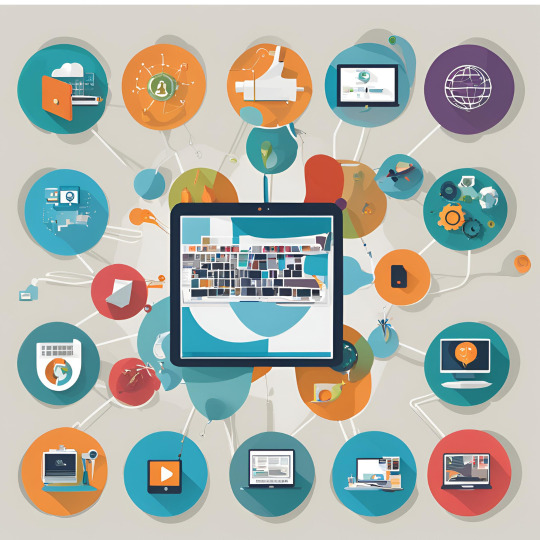
Submitted by: Van Dexter G. Tirado
3 notes
·
View notes
Text
“Innovators and Leaders: Unveiling the Top IT Companies in the US”

Title: “Innovators and Leaders: Unveiling the Top IT Companies in the US”
In the fast-paced world of technology, a select group of companies stands at the forefront, steering the direction of innovation and reshaping the digital landscape. The United States, a hotbed of technological advancement, hosts an elite cadre of IT companies whose impact transcends boundaries. Let’s delve into the realms of these trailblazers, the vanguards of the industry, who continue to redefine possibilities and set new benchmarks in the realm of technology.
1. Apple Inc.: Pioneering the Perfect Union of Innovation and Elegance At the epicenter of consumer electronics and software, Apple Inc. reigns supreme. Recognized for its sleek hardware – iPhones, Macs, iPads – and a sophisticated software ecosystem encompassing iOS and macOS, Apple’s commitment to seamless integration and groundbreaking design remains unparalleled.
2. Microsoft Corporation: Empowering Every Individual and Organization on the Planet Microsoft, a tech behemoth, extends a diverse portfolio ranging from software products and cloud services to cutting-edge hardware. Windows OS, Office Suite, Azure Cloud – each element a testament to its commitment to innovation, enterprise solutions, and empowering global connectivity.
3. Vee Technologies: Vee Technologies is one of the Top IT companies in USA which stands as a leading provider of comprehensive IT services, offering a wide array of solutions designed to meet the diverse needs of businesses across various industries. Vee Technologies as one Top IT companies in USA specializes in crafting tailored software solutions that cater to specific business requirements. Their expertise in software development spans applications, platforms, and systems, ensuring alignment with clients’ unique operational needs.
4. Amazon: Beyond Borders, Beyond Commerce Amidst its colossal e-commerce empire, Amazon’s crown jewel, Amazon Web Services (AWS), stands as a commanding force in cloud computing. It spearheads the provision of scalable computing power, storage solutions, and an array of cloud-based services.
5. Alphabet Inc. (Google): Redefining Information Access and Technological Innovation Google, the epitome of innovation, ventures beyond its hallmark search engine. Google Cloud, Android OS, and an extensive suite of software applications illustrate its commitment to shaping information accessibility and fostering technological advancement.
6. Meta Platforms (formerly Facebook): Building Connections in a Digital Sphere Meta Platforms, once Facebook, focuses on social networking and leaps into the realms of virtual reality (Oculus), augmented reality, and the pioneering developments within the metaverse.
7. IBM: Where Innovation Meets Enterprise Solutions IBM’s arsenal encompasses a gamut of IT services, consulting, and enterprise solutions, including cognitive computing technologies like Watson, geared towards reshaping industries and bolstering technological capabilities.
8. Oracle Corporation: Fortifying Businesses with Comprehensive Solutions A stalwart in database software and enterprise solutions, Oracle offers a suite of cloud applications and business software, catering to diverse business needs.
9. Intel Corporation: Empowering Computing with Semiconductors Intel’s prowess in semiconductor manufacturing crafts the beating heart of countless computing devices through its microprocessors and hardware components.
10. Cisco Systems: Forging Networks and Security in the Digital Age Cisco, a pioneer in networking solutions, fortifies businesses with networking hardware, software, cybersecurity measures, and innovations in IoT technologies.
2 notes
·
View notes
Text
Unlocking Agile Operations with the Power of Information Cloud

Introduction
In today’s rapidly changing digital landscape, agility is more than a competitive edge—it’s a business necessity. Organizations must be able to respond quickly to market demands, customer needs, and operational disruptions. This is where the Information Cloud comes in, serving as a dynamic foundation for enabling agile operations across all business functions.
The Information Cloud refers to an integrated, cloud-native environment that centralizes data, applications, and services to support fast, flexible, and scalable decision-making. Whether in manufacturing, logistics, finance, or customer service, an Information Cloud empowers teams with real-time insights, collaboration tools, and data-driven automation—transforming rigid processes into responsive, intelligent workflows.
What Is an Information Cloud?
An Information Cloud is a cloud-based infrastructure that brings together data storage, analytics, and communication platforms under one secure, accessible ecosystem. It supports:
Unified data access across departments
Real-time analytics and reporting
Scalable storage and compute power
Seamless integration with business applications
Intelligent automation and AI-driven decisions
Popular platforms enabling this capability include Microsoft Azure, AWS, Google Cloud, and hybrid solutions that blend private and public cloud environments.
Key Benefits of an Information Cloud for Agile Operations:
Real-Time Decision-Making Access to up-to-the-minute data enables faster, more informed decisions, especially during critical business events or disruptions.
Cross-Team Collaboration Cloud-based collaboration tools and shared data platforms help teams work in sync, regardless of location or department.
Operational Flexibility Agile workflows powered by cloud data ensure your business can pivot quickly—adapting to new demands without the need for infrastructure changes.
Cost Efficiency and Scalability Pay-as-you-go models and elastic scaling ensure you only use the resources you need, reducing operational overhead.
Business Continuity and Resilience Cloud-based backups, failovers, and remote access protect operations from on-premise system failures or disasters.
How to Build an Agile Operation with Information Cloud:
Centralize Data Repositories Unify siloed data sources into cloud platforms like Azure Data Lake, AWS S3, or Google BigQuery.
Adopt Cloud-Native Tools Leverage platforms like Power BI, Tableau, or Looker for real-time dashboards and analytics.
Automate Workflows Use services like Azure Logic Apps, AWS Lambda, or ServiceNow for intelligent process automation.
Enable Self-Service Analytics Empower employees with no-code/low-code tools to build their own reports and automate tasks.
Ensure Governance and Security Use built-in cloud controls to maintain compliance, monitor access, and enforce data privacy.
Real-World Use Cases:
Supply Chain Agility: Real-time tracking and predictive analytics enable proactive inventory management and logistics.
Finance and Accounting: Automated reporting and forecasting tools ensure quick insights into cash flow and profitability.
Healthcare Operations: Unified patient records and predictive care management enhance service delivery.
Smart Manufacturing: IoT sensors and cloud analytics optimize production schedules and machine maintenance.
Best Practices:
Start small with one or two cloud-enabled processes before scaling.
Regularly review data governance policies for security and compliance.
Train staff on cloud collaboration tools and agile methodologies.
Continuously monitor performance using integrated dashboards.
Conclusion:
An Information Cloud is more than just storage—it's the digital nervous system of an agile enterprise. By centralizing data, empowering teams with intelligent tools, and fostering cross-functional collaboration, it enables businesses to move faster, respond smarter, and operate more efficiently. Whether you're building smart factories, modernizing back-office functions, or enhancing customer experiences, the Information Cloud equips your organization to lead with agility in a digital-first world.
0 notes
Text
Cloud Networking Market Innovation Surges as Businesses Prioritize Scalable Secure Cloud Network Solutions
The cloud networking market is undergoing a significant transformation, driven by the increasing demand for scalable, agile, and cost-efficient networking solutions. Cloud networking refers to the use of cloud-based services and infrastructure to manage and deliver network functions such as connectivity, security, and performance management. As enterprises continue to embrace digital transformation, cloud networking has become a foundational component in achieving operational efficiency, innovation, and competitiveness.
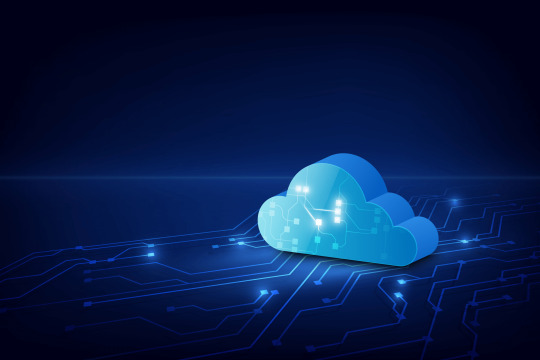
Market Overview
The global cloud networking market has seen rapid growth in recent years. This expansion is primarily fueled by the proliferation of cloud-based applications, the shift towards hybrid and multi-cloud environments, and the rising need for improved network agility and automation. Organizations are moving away from traditional on-premises networking models and investing in cloud-native networking solutions that offer on-demand scalability and centralized control.
Key industry players such as Cisco, Amazon Web Services (AWS), Microsoft Azure, Google Cloud, and IBM are continuously innovating and expanding their cloud networking portfolios. These companies are integrating artificial intelligence (AI), machine learning (ML), and automation capabilities into their networking services, which has enhanced network visibility, threat detection, and overall performance.
Market Drivers
Several critical factors are propelling the growth of the cloud networking market:
Increased Adoption of Cloud Services: As more businesses migrate their workloads to the cloud, the demand for secure and reliable cloud networking infrastructure continues to rise.
Remote Work and BYOD Trends: The global shift to remote and hybrid work environments has underscored the need for scalable cloud networking that supports seamless access to resources from any location or device.
Edge Computing and IoT Integration: The rise of edge computing and Internet of Things (IoT) devices has led to the need for decentralized networking models, further increasing the demand for cloud-based network management tools.
Security and Compliance Requirements: Modern cloud networking solutions offer enhanced security features, including network segmentation, zero-trust models, and compliance monitoring, making them ideal for organizations in regulated industries.
AI and Automation Integration: The integration of AI and automation into cloud networking platforms is enabling predictive analytics, self-healing networks, and automated troubleshooting, which reduce operational costs and enhance user experiences.
Market Segmentation
The cloud networking market can be segmented based on:
Deployment Type: Public cloud, private cloud, and hybrid cloud.
Component: Solutions (e.g., SD-WAN, cloud routers, cloud firewalls) and services (e.g., consulting, integration).
Organization Size: Small and Medium Enterprises (SMEs) and large enterprises.
End-User Industry: IT & telecom, BFSI, healthcare, retail, manufacturing, and government.
Among these, the hybrid cloud deployment model is gaining significant traction due to its flexibility, scalability, and cost-efficiency. Additionally, the IT and telecom sector remains the largest consumer of cloud networking technologies, followed closely by the BFSI and healthcare sectors.
Regional Insights
North America currently dominates the cloud networking market, owing to the presence of leading technology providers and high adoption of cloud computing in the region. However, the Asia-Pacific (APAC) region is expected to witness the fastest growth during the forecast period, driven by rapid digitalization in countries like China, India, and Japan. Governments in these regions are also heavily investing in cloud infrastructure and smart city projects, further boosting market potential.
Challenges and Opportunities
Despite the numerous benefits, the cloud networking market faces several challenges. Data privacy concerns, legacy system integration, and complex compliance requirements continue to hinder seamless cloud network adoption. Additionally, ensuring consistent network performance across geographically distributed environments remains a critical issue.
However, these challenges also open up new opportunities. There is a growing market for cloud-native security tools, network analytics platforms, and interoperability solutions that address these pain points. Startups and niche players focusing on AI-driven cloud networking innovations are also expected to play a pivotal role in shaping the market's future.
Future Outlook
The future of the cloud networking market looks promising. As technologies like 5G, AI, and blockchain continue to evolve, they will reshape the way cloud networks are designed and managed. Enterprises will increasingly adopt software-defined networking (SDN) and network function virtualization (NFV) to improve network flexibility and reduce infrastructure costs.
By 2030, the cloud networking market is expected to become a central enabler of enterprise digital ecosystems, supporting innovations in everything from autonomous systems to immersive virtual environments. Organizations that invest in robust, secure, and intelligent cloud networking infrastructure today will be better positioned to thrive in the digital economy of tomorrow.
0 notes
Text

Experience the perfect blend of speed, reliability, and scalability with cloud technology. ⚡ Elevate your app’s performance and keep users coming back for more! 🔗Learn more: https://greyspacecomputing.com/custom-mobile-application-development-services/ 📧 Visit: https://greyspacecomputing.com/portfolio
#GreySpaceComputing#CloudTech#AppScalability#cloudcomputing#cloud#technology#cybersecurity#aws#bigdata#devops#it#datacenter#azure#cloudstorage#linux#programming#software#tech#iot#cloudservices#coding#cloudsecurity#machinelearning#informationtechnology#datascience#business#python#security#microsoft#dataprotection
1 note
·
View note
Text
Azure’s Evolution: What Every IT Pro Should Know About Microsoft’s Cloud
IT professionals need to keep ahead of the curve in the ever changing world of technology today. The cloud has become an integral part of modern IT infrastructure, and one of the leading players in this domain is Microsoft Azure. Azure’s evolution over the years has been nothing short of remarkable, making it essential for IT pros to understand its journey and keep pace with its innovations. In this blog, we’ll take you on a journey through Azure’s transformation, exploring its history, service portfolio, global reach, security measures, and much more. By the end of this article, you’ll have a comprehensive understanding of what every IT pro should know about Microsoft’s cloud platform.
Historical Overview
Azure’s Humble Beginnings
Microsoft Azure was officially launched in February 2010 as “Windows Azure.” It began as a platform-as-a-service (PaaS) offering primarily focused on providing Windows-based cloud services.
The Azure Branding Shift
In 2014, Microsoft rebranded Windows Azure to Microsoft Azure to reflect its broader support for various operating systems, programming languages, and frameworks. This rebranding marked a significant shift in Azure’s identity and capabilities.
Key Milestones
Over the years, Azure has achieved numerous milestones, including the introduction of Azure Virtual Machines, Azure App Service, and the Azure Marketplace. These milestones have expanded its capabilities and made it a go-to choice for businesses of all sizes.
Expanding Service Portfolio
Azure’s service portfolio has grown exponentially since its inception. Today, it offers a vast array of services catering to diverse needs:
Compute Services: Azure provides a range of options, from virtual machines (VMs) to serverless computing with Azure Functions.
Data Services: Azure offers data storage solutions like Azure SQL Database, Cosmos DB, and Azure Data Lake Storage.
AI and Machine Learning: With Azure Machine Learning and Cognitive Services, IT pros can harness the power of AI for their applications.
IoT Solutions: Azure IoT Hub and IoT Central simplify the development and management of IoT solutions.
Azure Regions and Global Reach
Azure boasts an extensive network of data centers spread across the globe. This global presence offers several advantages:
Scalability: IT pros can easily scale their applications by deploying resources in multiple regions.
Redundancy: Azure’s global datacenter presence ensures high availability and data redundancy.
Data Sovereignty: Choosing the right Azure region is crucial for data compliance and sovereignty.
Integration and Hybrid Solutions
Azure’s integration capabilities are a boon for businesses with hybrid cloud needs. Azure Arc, for instance, allows you to manage on-premises, multi-cloud, and edge environments through a unified interface. Azure’s compatibility with other cloud providers simplifies multi-cloud management.
Security and Compliance
Azure has made significant strides in security and compliance. It offers features like Azure Security Center, Azure Active Directory, and extensive compliance certifications. IT pros can leverage these tools to meet stringent security and regulatory requirements.
Azure Marketplace and Third-Party Offerings
Azure Marketplace is a treasure trove of third-party solutions that complement Azure services. IT pros can explore a wide range of offerings, from monitoring tools to cybersecurity solutions, to enhance their Azure deployments.
Azure DevOps and Automation
Automation is key to efficiently managing Azure resources. Azure DevOps services and tools facilitate continuous integration and continuous delivery (CI/CD), ensuring faster and more reliable application deployments.
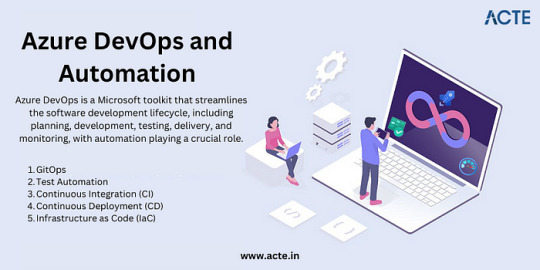
Monitoring and Management
Azure offers robust monitoring and management tools to help IT pros optimize resource usage, troubleshoot issues, and gain insights into their Azure deployments. Best practices for resource management can help reduce costs and improve performance.
Future Trends and Innovations
As the technology landscape continues to evolve, Azure remains at the forefront of innovation. Keep an eye on trends like edge computing and quantum computing, as Azure is likely to play a significant role in these domains.
Training and Certification
To excel in your IT career, consider pursuing Azure certifications. ACTE Institute offers a range of certifications, such as the Microsoft Azure course to validate your expertise in Azure technologies.

In conclusion, Azure’s evolution is a testament to Microsoft’s commitment to cloud innovation. As an IT professional, understanding Azure’s history, service offerings, global reach, security measures, and future trends is paramount. Azure’s versatility and comprehensive toolset make it a top choice for organizations worldwide. By staying informed and adapting to Azure’s evolving landscape, IT pros can remain at the forefront of cloud technology, delivering value to their organizations and clients in an ever-changing digital world. Embrace Azure’s evolution, and empower yourself for a successful future in the cloud.
#microsoft azure#tech#education#cloud services#azure devops#information technology#automation#innovation
2 notes
·
View notes
Text
How Dynamics 365 & IoT Optimize Field Service Operations
Microsoft Dynamics 365 Field Service, combined with IoT integration, is transforming traditional maintenance models into intelligent, proactive service operations. By connecting smart devices through Azure IoT Hub, businesses gain real-time insights that trigger alerts, automate work orders, and enable remote troubleshooting—reducing downtime and enhancing efficiency.
This powerful synergy—known as Connected Field Service—helps technicians resolve issues before they occur, supports predictive maintenance, and ensures seamless service delivery. The result is improved operational reliability and higher customer satisfaction.
With features like automated scheduling, device monitoring, and integration across the Microsoft ecosystem, Dynamics 365 Field Service provides a comprehensive platform for optimising field operations. Partnering with experts like Web Synergies ensures smooth implementation, unlocking the full potential of IoT-driven field service management.
0 notes